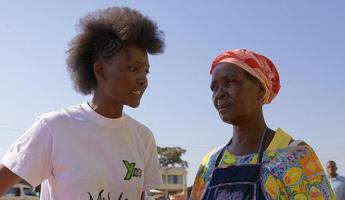
Methodology
This project to develop the Gender-Sensitive Indicators for Early Warning of Violence and Conflict: A Global Framework consisted of five interconnected phases:
- a literature review and compilation of known, existing gender-sensitive early warning indicators
- the development of new and modified gender-sensitive indicators
- expert consultations
- a context-specific pilot
- validation workshops to produce a final global framework.
Literature Review and Compilation of Known, Existing Gender-Sensitive Indicators
Drawing on more than 60 documents and preliminary consultations with gender and early warning systems experts and data specialists, the literature review catalogued attempts to integrate gender in early warning systems to date; outlined persistent data collection and analytical challenges associated with these efforts; and compiled an inventory of all previously referenced gender-sensitive indicators that were publicly available to have a complete understanding of existing efforts. The key findings from the literature review are summarized in Section IV and the complete document is included as Annex A.
Development of New and Modified Gender-Sensitive Indicators
While drafting the literature review, IFES compiled an extensive inventory of more than 300 gender-sensitive indicators that had been previously included or suggested for inclusion in early warning systems, as referenced in the section above and included as Annex E. Once all of the known gender-sensitive indicators were identified, IFES sought to adapt, modify and generate new gender-sensitive indicators that could be measured in real time and that would be applicable to most contexts, as detailed below. The results are the new and modified gender-sensitive indicators presented in the table in Section V of this framework.
The inventory includes structural indicators (e.g., the number of women in parliament), context-specific subnational indicators (e.g., fluctuating bride-to-cattle prices) and dynamic indicators (e.g., increase in trafficking of women). The vast majority of these indicators had not been tested for their effectiveness nor could they be linked to an existing, available dataset. Literature review findings and consultations with experts revealed that while structural indicators related to gender might be successful in prediction models over longer time horizons, they do not provide helpful data to track more dynamic changes (daily, weekly, or monthly) at the local level that could lead to increased risks of violence or conflict. Based on this finding, IFES – in consultation with State/CSO and gender, conflict and data experts – decided to focus this project on dynamic indicators that can be measured in near real time instead of structural indicators that measure gender inequality over a longer time horizon. The aim of dynamic indicators is to monitor rapid changes in behavior and incidents related to gender at the subnational level, which could signal growing tensions, insecurity or rising risks of violence and conflict. Drawing on the more comprehensive inventory of indicators compiled during the desk review, the researchers drafted a short list of new and modified dynamic (or “fast-moving”) gender-sensitive indicators that formed the basis of more in-depth expert consultations.
Expert Consultations
Building on the preliminary interviews conducted during the desk review, IFES held 24 key informant interviews to seek feedback on the findings of the literature review and the draft short list of new and modified dynamic gender-sensitive indicators. IFES approached experts based on their work on early warning systems or gender, or upon recommendations obtained from other key informant interviews. Interviews were conducted with early warning specialists as well as representatives from: the United Nations (UN), Organization for Security and Cooperation in Europe, North Atlantic Treaty Organization (NATO), and the World Bank; global, regional, and national women’s organizations working on conflict prevention; and international relations think tanks. A full list of individuals consulted throughout this project is in Annex C.
Context-Specific Pilot Implementation
IFES worked with implementing partner – and long-term partner on electoral violence monitoring initiatives – Kimpact Development Initiative (KDI) to adapt and test the integration of five gender-sensitive indicators into KDI’s existing electoral violence monitoring efforts across nine states in Nigeria from October to December 2020. Due to COVID-19 travel restrictions, IFES did not provide in-country support to KDI but was able to maintain close collaboration through remote/virtual methods. Nigeria was selected as the pilot country per the criteria established by IFES and State/CSO, as Nigeria had: 1) experienced different forms of political, electoral and extremist violence; 2) upcoming pertinent political events (elections); 3) established early warning monitoring efforts; and 4) significant cultural diversity within the country. The indicators aimed to measure rapid and differentiated behaviors and incidents related to gender that could potentially signal growing insecurity. Additional details about the pilot are outlined in Section VI and in Annex B.
Validation Workshops
Upon completion of the pilot in Nigeria, the main findings and recommendations from the framework were discussed at two validation workshops, the first with representatives from the U.S. Department of State and the United States Agency for International Development, and a second with experts who were consulted during the earlier phases of the project. The two validation workshops gathered feedback on the framework new or modified indicators, and recommendations on how to adapt context-specific indicators into other local, national, regional, or global early warning systems and violence monitoring efforts. This global framework reflects the feedback received in these two workshops.




